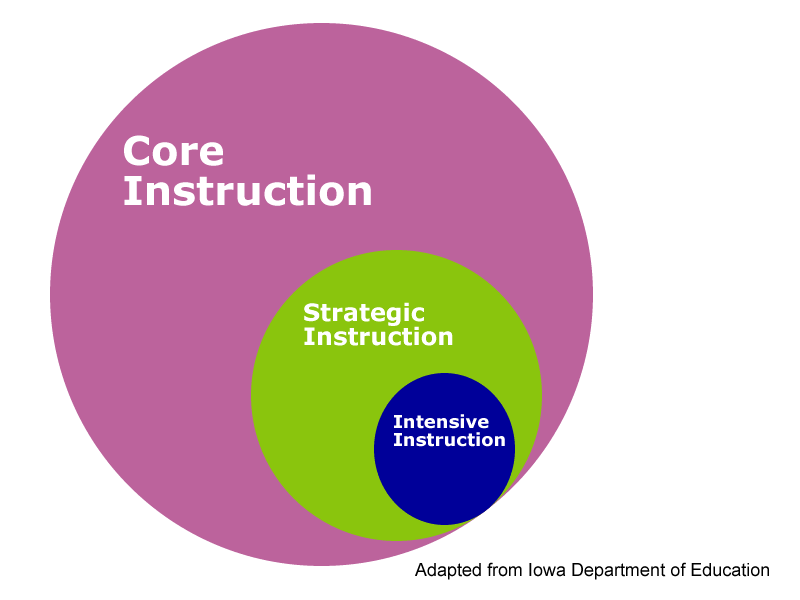Determine Time & Intensity
Is it possible to implement an intervention plan with the proper time and intensity to assure its success?
A Classroom Example
Here is an example; by using a curriculum based assessment, the teacher discovers that many students in the classroom substitute the letter t for a d when writing words ending with a past tense suffix. The teacher can work a lesson into the core instruction to remedy the issue. Through progress monitoring, the teacher discovers that a small group of students are still struggling with the concept, so supplemental instruction is then provided for these students for a short period of time to support these student needs. After a few group sessions, all but two students have mastered the skill. The two students that did not respond to the intervention require a more intensive evidence-based intervention for an extended period of time. How do these different interventions relate to the 3-tier support model?
Tier 1
The first targeted classroom lesson is considered a tier one, core instructional intervention. The teacher differentiated the instruction to meet the needs of the student. The teacher effectively matched the students' skills with the core curriculum to create an instructional match. These types of adjustments take place within the typical instructional setting.
Tier 2
The small group supplemental instruction is considered a tier two intervention. These services are provided in addition to the core classroom instruction. They are implemented for a shorter period of time. The amount of time and frequency of the sessions can be adjusted based on the progress demonstrated by the students progress.
Tier 3
The two students in the example who did not respond to the tier two intervention will require an intervention with greater time and intensity. These tier three interventions take place for longer periods and with a more substantial block of time. It is non-negotiable that these interventions be evidence-based and delivered by a highly qualified instructor.
Problem Severity
An intervention should relate to the severity of the problem. This is an important consideration for the overall success of an intervention. If an intervention is implemented without proper fidelity, frequency, or for too short of a time, the intervention will likely fail. If the intervention is monitored with ongoing assessment, the time and intensity can be adjusted. The more sever the problem is the more time and intensity is required.

